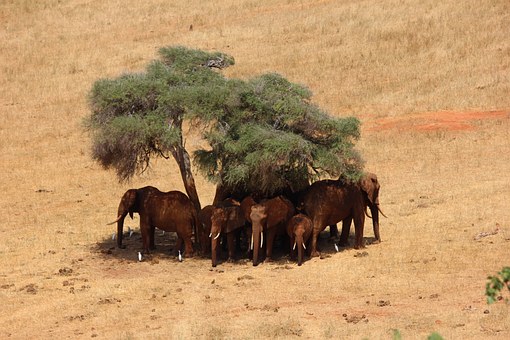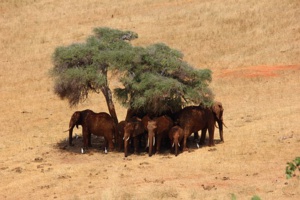Dailycsr.com – 12 December 2018 – The earth is going through a biodiversity crisis at present, writes Leigh Ann Winowiecki, as one third of global lands have fallen prey to “deforestation, soil erosion, loss of soil fertility, declining water quality and pollution”.
As a result, the people living in rural area, “like pastoralist communities and smallholder farmers”, are facing the negative impact thus generated as their source of livelihood is heavily dependent on natural resources. Furthermore, the degrading soil condition have also affected the animal lives on land, as within a span of forty years there is a fifty percent drop in the “vertebrate species populations”.
The issue has grabbed global attention, while efforts are being made to “restore degraded lands”. The “Bonn Challenge” is one such initiative that encourages countries to commit to the “ambitious task of restoring 350 million hectares of degraded lands by 2030”. Leigh Ann Winowiecki informs that:
“African nations committed to 100 million hectares. This entails the enormous task of planting trees and ground cover and restoring soil fertility – all actions which also help increase the soil’s ability to absorb water and reduce erosion”.
However, given the large scale of the work at hand one has to also figure out how to deploy efforts and resources in the most effective way as the “problem of limited resources” seems to be a persistent one. In a new publication, the “Land Degradation Surveillance Framework” tackles the issue thorough systemic “measuring and tracking indicators of land health”.
While, Winowiecki, “Soil Systems Scientist, World Agroforestry Centre (ICRAF) and Tor-Gunner Vågen, Senior Scientist and head of the GeoScience lab , World Agroforestry Centre (ICRAF)” added:
“Our study focused on the drylands of Kenya, where the framework is being used. We found that key indicators of land and soil health vary. This meant that consistent and robust monitoring methods are needed to prioritise and inform investments. Specifically, indicators that are science based, can be measured, are fast, based on varying scales (plot, field, landscape, region) and are representative of the complex processes of land degradation in landscapes”.
The “Land Degradation Surveillance Framework” collected data about Kenya’s “soil fertility, soil organic carbon, vegetation cover and biodiversity, land use and land degradation” along with “data from earth observation platforms” and in turn generated map for processing land degradation”. Following this work the effective “rehabilitation options” such as “tree planting, improved rangeland management, agroforestry practices and erosion control” were assessed.
The 200km2 of “Mpala Research Centre” of “Laikipia County, Kenya” was used as a test case wherein soil analysis in combination with spectroscopy’s results the soil health was determined. At the final stage “predictive maps of soil characteristics and land degradation” was produced which gave a clear picture of the area that need the most attention. Talking about the innovation involved in the above mentioned approach, Winowiecki highlighted several such points:
As a result, the people living in rural area, “like pastoralist communities and smallholder farmers”, are facing the negative impact thus generated as their source of livelihood is heavily dependent on natural resources. Furthermore, the degrading soil condition have also affected the animal lives on land, as within a span of forty years there is a fifty percent drop in the “vertebrate species populations”.
The issue has grabbed global attention, while efforts are being made to “restore degraded lands”. The “Bonn Challenge” is one such initiative that encourages countries to commit to the “ambitious task of restoring 350 million hectares of degraded lands by 2030”. Leigh Ann Winowiecki informs that:
“African nations committed to 100 million hectares. This entails the enormous task of planting trees and ground cover and restoring soil fertility – all actions which also help increase the soil’s ability to absorb water and reduce erosion”.
However, given the large scale of the work at hand one has to also figure out how to deploy efforts and resources in the most effective way as the “problem of limited resources” seems to be a persistent one. In a new publication, the “Land Degradation Surveillance Framework” tackles the issue thorough systemic “measuring and tracking indicators of land health”.
While, Winowiecki, “Soil Systems Scientist, World Agroforestry Centre (ICRAF) and Tor-Gunner Vågen, Senior Scientist and head of the GeoScience lab , World Agroforestry Centre (ICRAF)” added:
“Our study focused on the drylands of Kenya, where the framework is being used. We found that key indicators of land and soil health vary. This meant that consistent and robust monitoring methods are needed to prioritise and inform investments. Specifically, indicators that are science based, can be measured, are fast, based on varying scales (plot, field, landscape, region) and are representative of the complex processes of land degradation in landscapes”.
The “Land Degradation Surveillance Framework” collected data about Kenya’s “soil fertility, soil organic carbon, vegetation cover and biodiversity, land use and land degradation” along with “data from earth observation platforms” and in turn generated map for processing land degradation”. Following this work the effective “rehabilitation options” such as “tree planting, improved rangeland management, agroforestry practices and erosion control” were assessed.
The 200km2 of “Mpala Research Centre” of “Laikipia County, Kenya” was used as a test case wherein soil analysis in combination with spectroscopy’s results the soil health was determined. At the final stage “predictive maps of soil characteristics and land degradation” was produced which gave a clear picture of the area that need the most attention. Talking about the innovation involved in the above mentioned approach, Winowiecki highlighted several such points:
- First, by using mid-infrared spectroscopy we significantly reduce the time and cost of analysing soils
- Second, the highly precise models used to predict soil characteristics allows us to take enough soil samples to accurately account for variation across the landscape
- Third, by integrating all the data we were able to expand the scale of our projections and mapping to the landscape and regional levels.
However, Winowiecki also said:
“Although we only mapped a 200 km2 land area, the approach has the potential for mapping land rehabilitation needs for much larger areas. This will assist national and regional level decision makers on how to invest scarce funds to restore productivity to the land, and help bend the trajectory of declining nature”.
References:
3blmedia.com


 Kenya’s Lesson On Land Restoration 2030 Commitment
Kenya’s Lesson On Land Restoration 2030 Commitment





 Companies
Companies